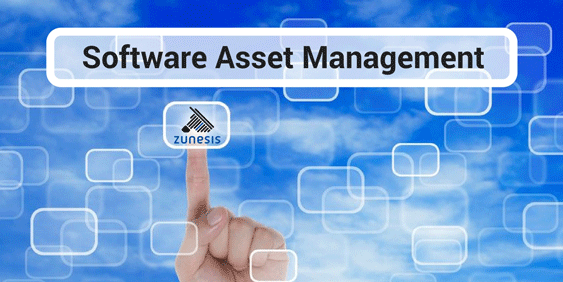Examples of Software Asset Management in Action

Examples of Software Asset Management in action.
Example:
What has been common practice, for as long as licensing vehicles have been around, has been a licensing model tied to discount levels via volume purchasing. The more you buy, the more you save. In most cases, from a purely discount perspective, it’s tough to argue getting the heaviest discount up front. However, upon further review, often the volume license vehicle in question may have clients commit to purchasing products they don’t need.
It’s generally safe to assume, for the most part, most knowledge workers regularly use e-mail. And probably Word Processing. But what about presentation software, or diagram software? Perhaps database software? As we move through the list, consumption begins to wean. As a common practice, many publishers will bundle these products; however, not every user will actually utilize all of these products.
What does this mean for a company’s bottom line? How does this impact budget?
Enter SAM:
SAM takes a look at not only what was purchased but also whether or not the product has been used. If it has been used, how frequently?
Why is this important?
 Say you have a large yearly payment via a structured licensing agreement (True Up or Annual Payment). Or, perhaps, you’ve already made the investment and are looking to renew the agreement maintenance; and after implementing a SAM program, you discover that no more than 10% of the overall TOTAL suite of products purchased have been consumed. In this case, the product suite is $300 per user X 250 users = $75,000. This means dollars have been lost in the investment. In other words, the client has invested $75K; however, they have only consumed $7,500.
Say you have a large yearly payment via a structured licensing agreement (True Up or Annual Payment). Or, perhaps, you’ve already made the investment and are looking to renew the agreement maintenance; and after implementing a SAM program, you discover that no more than 10% of the overall TOTAL suite of products purchased have been consumed. In this case, the product suite is $300 per user X 250 users = $75,000. This means dollars have been lost in the investment. In other words, the client has invested $75K; however, they have only consumed $7,500.
The challenge here is that often licensing is an all up-front investment, and it doesn’t matter whether the product ends up getting used or not. Often this is case. Businesses make the move to dive deep into an agreement to establish discount levels; however, they rarely consume more than a fraction of the product.
What are the alternatives?
Driving Business Value Through Proper Spending
One could, via a solid SAM program, identify software utilization – whether or not an end user is using a product, and if so, how often?
You almost need to re-calibrate your thinking around software consumption. A similar example would be if you were to enter a 3-year car lease; and out of the 3 years, you only use the vehicle a total of 1.5 years. That means you will have paid for a 3-year consumption of the vehicle, regardless of the fact that you didn’t get 3 years of value out of it.
The beauty of SAM is that it provides the data to support consumption behavior as well as the ability to quickly address software non-compliance, and this equals dollars saved on pending software investments. The intelligence you can bring to the negotiating table when renewing a maintenance agreement by understanding exactly what your organization actually needs is a powerful tool to drive value for your business.
Proving that your users only utilize 3 out of the 10 products in a suite allows for greater reduction in unnecessary spending. Why buy what you don’t use? Perhaps this means you buy ala-carte vs. a bundled suite for the 75% of your end-user population who don’t need all the bells and whistles.
The bottom line is that SAM from Microsoft reveals these insights and can drive cost savings in significant way. This means truly paying for what you are using.
Driving Business Value Through Compliance
For those concerned with compliance, having the insight to determine whether or not an organization is under-licensed means limited negative exposure through legal action and/or fines and penalties.
 As an example, I recall a large government entity that recently paid $1.2M in non-compliance penalties back to the software manufacturer. Let me say that again: $1.2 million!
As an example, I recall a large government entity that recently paid $1.2M in non-compliance penalties back to the software manufacturer. Let me say that again: $1.2 million!
Not only was the entity liable to pay the fines, they also needed to true-up and get current on their licensing. This government agency made front page news via the city paper for this catastrophe – and it turns out that not all press is good press. In addition to the dollars spent in penalties and fines, along with the cost of getting current with compliance, the repercussion both internally and externally was disastrous.
The reality is, this story has become an everyday occurrence; and it is becoming increasingly more commonplace throughout IT. However, this situation, as well as other non-compliance situations, could have been avoided with the utilization of a SAM discipline.
These are just a few of the many challenges relieved by SAM. Whether it’s overcoming high dollar renewals, protecting against non-compliance, or revealing usage behaviors to support key buying decisions, there is an important place for Software Asset Management in every organization. As recognized SAM experts, let the Zunesis team help you define where this will be of the most use to you; and you might even be surprised at all of the ways it applies within your business.
Categories
Search
Blog Categories
Related Resources
Archives
- July 2024
- June 2024
- May 2024
- April 2024
- March 2024
- January 2024
- October 2023
- September 2023
- August 2023
- July 2023
- June 2023
- May 2023
- April 2023
- March 2023
- February 2023
- January 2023
- October 2022
- July 2022
- June 2022
- May 2022
- April 2022
- March 2022
- February 2022
- January 2022
- December 2021
- November 2021
- October 2021
- September 2021
- August 2021
- July 2021
- June 2021
- May 2021
- April 2021
- March 2021
- February 2021
- January 2021
- December 2020
- November 2020
- October 2020
- September 2020
- August 2020
- July 2020
- June 2020
- May 2020
- April 2020
- March 2020
- February 2020
- January 2020
- December 2019
- November 2019
- October 2019
- September 2019
- August 2019
- July 2019
- June 2019
- May 2019
- April 2019
- March 2019
- February 2019
- January 2019
- December 2018
- November 2018
- October 2018
- September 2018
- August 2018
- July 2018
- June 2018
- May 2018
- April 2018
- March 2018
- February 2018
- January 2018
- December 2017
- November 2017
- October 2017
- September 2017
- August 2017
- July 2017
- June 2017
- May 2017
- April 2017
- March 2017
- February 2017
- January 2017
- December 2016
- November 2016
- October 2016
- September 2016
- August 2016
- July 2016
- June 2016
- May 2016
- March 2016
- February 2016
- January 2016
- December 2015
- October 2015
- September 2015
- August 2015
- July 2015
- June 2015
- May 2015
- April 2015
- March 2015
- February 2015
- January 2014
- February 2013




